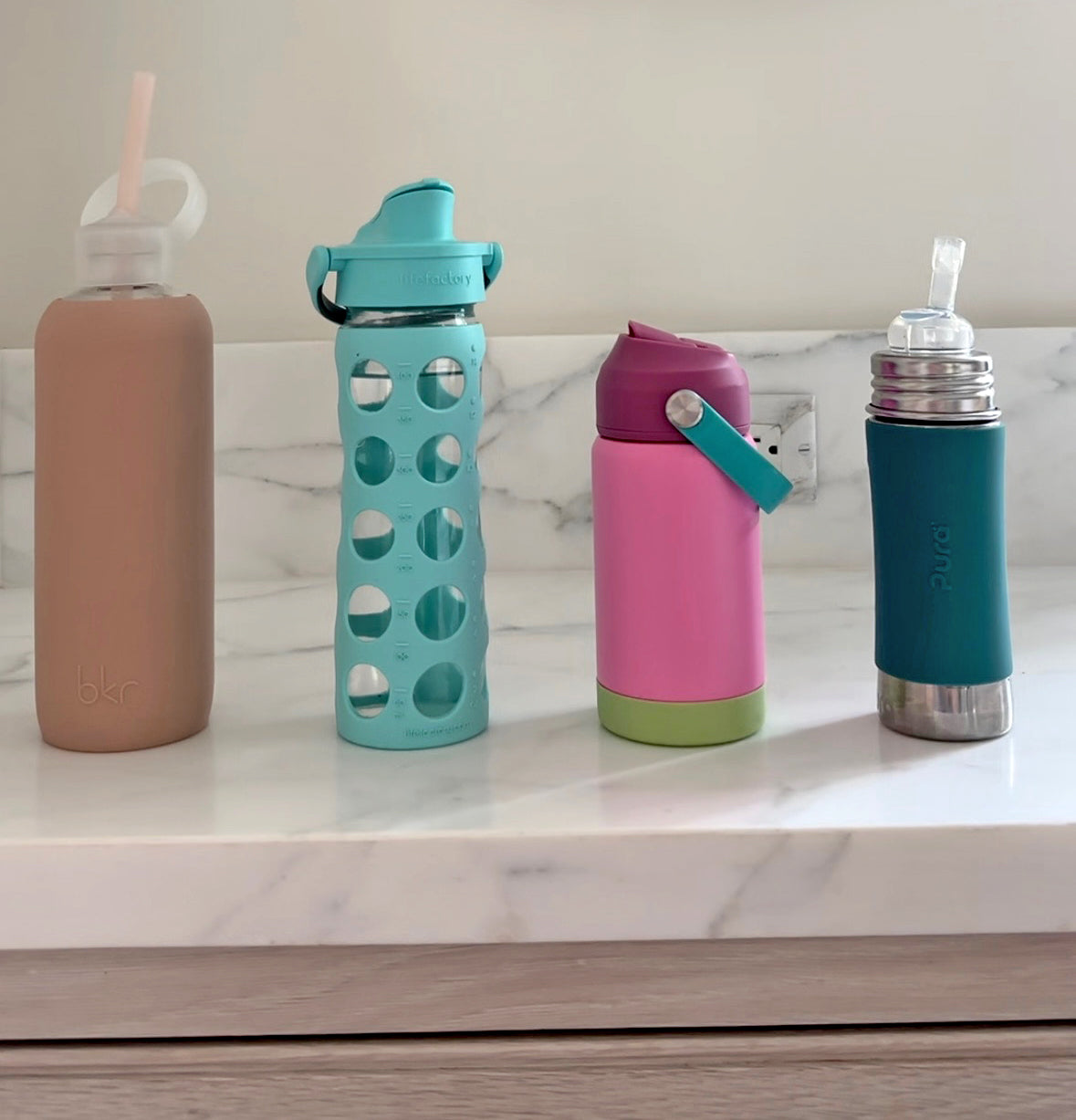Harnessing the Power of Light: Exploring the Benefits of Light Therapy

At Branch Basics, we’re all about supporting wellness in every aspect of life. One of our favorite more recent additions has been using light therapy.
Whether it’s helping improve mood or healing inflammation, light therapy has made a big difference in our routines! Personally, I (Allison) have used both light religiously over the past few years and have seen major improvements in my health.
In this article, we’re breaking down some of the most popular types of light therapy in the wellness world and how we use them.
#1 Bright Light Therapy (BLT)
Bright Light Therapy is a popular tool for people dealing with Seasonal Affective Disorder (SAD), a type of depression triggered by reduced sunlight exposure in the winter months.
The therapy involves sitting in front of a specially designed light box that mimics natural daylight. Exposure to this bright light helps reset the body's circadian rhythm, the internal clock that regulates sleep and mood.
Benefits:
- Improves Mood: Research shows that BLT can alleviate symptoms of SAD and improve overall mood, particularly in the winter when natural sunlight is scarce.
- Boosts Energy: Many users report an increase in energy levels after regular use, making it helpful for combating fatigue.
- Enhances Sleep: By resetting your circadian rhythm, BLT can also help regulate sleep patterns, promoting more restful nights and easier mornings.
Bright light therapy gives exposure to light that mimics the natural sunlight and is often seen in light box form.
When looking for a bright light to use, we recommend looking for a bright LED light that emits minimal UV rays. Looking for a light that is specific to treating SAD is the best way to ensure the light will help alleviate symptoms.
#2 Red Light Therapy (RLT)
Red Light Therapy (RLT) is another popular option, known for its ability to support skin health and reduce inflammation.
This type of phototherapy penetrates deep into the skin using low-wavelength red light, promoting cellular regeneration, and reducing inflammation, while increasing collagen production. It’s often used in dermatology clinics but is now widely available for home use.
Benefits:
- Improves Skin Health: Regular exposure to red light can reduce wrinkles, fine lines, and other signs of aging by boosting collagen production.
- Reduces Pain and Inflammation: Studies show that RLT provides relief from joint pain, muscle aches, and even chronic conditions like arthritis after consistent use of red light therapy.
- Accelerates Healing: RLT speeds up muscle recovery and reduces inflammation, allowing recovery from injuries to be faster. This is especially beneficial to athletes and individuals recovering from an injury.
When looking for a red light therapy device, you want to look for a high-quality product that will give you results. We believe that red light at-home devices are an investment in our long-term health, our favorites are from LUMEBOX and BonCharge. Their customer service is also always so helpful, something I truly value!
While at-home devices may not be as powerful as those used in dermatology clinics, they are still safe, effective, and easy to use. Just follow the manufacturer's guidelines to maximize benefits.
#3 Infrared Light Therapy
Infrared Light Therapy (NIR) is widely used in various fields as an alternative treatment to help heal joint pain, arthritis, and more. Infrared light is able to penetrate deeply into our muscles and joints, promoting blood flow, improving circulation, and reducing inflammation.
NIR uses longer wavelengths that are invisible to the naked eye but penetrate deeper than red light. It stimulates cells, making it an ideal choice for those suffering from chronic pain, stiffness, or inflammation.
Benefits:
- Deep Muscle Recovery: NIR is commonly used by individuals recovering from injuries to help relax muscles, reduce stiffness, and accelerate healing.
- Improves Circulation: The deep penetration of infrared light promotes better blood flow, helping oxygen and nutrients reach tissues faster, which speeds up recovery and enhances overall vitality.
- Pain Relief: Whether you're dealing with joint pain, arthritis, or chronic conditions, infrared light therapy has shown significant benefits in reducing inflammation and offering long-term pain relief.
- Cellular Repair: Infrared light enhances the function of mitochondria, the powerhouses of our cells, promoting efficient energy production and faster repair of damaged tissues.
Infrared saunas are the most popular way to experience the benefits of NIR. This has been a game-changer for my health, especially as I navigated chronic Lyme and mold exposures.
Our personal favorite infrared saunas are from Therasage for a portable option and the Far Infrared 1 Person Sauna Heavenly Heat Sauna for an in-home installation (smallest and most affordable option they carry). These Heavenly Heat saunas are made of non-toxic materials and are low EMF. The last thing you would want is to sweat out one toxin and inhale fumes of another!
For more information on infrared saunas, we highly suggest listening to this podcast episode with wellness advocate, scientist, inventor, and founder of Therasage, Robby Besner.
Infrared Light Therapy vs Red Light Therapy
Infrared Light Therapy (NIR) and Red Light Therapy (RLT) are two popular types of light therapy that are often used together, but they have distinct differences in terms of how they function and the benefits they offer.
Here’s a closer look at how they compare and differ.
Depth of Penetration:
- Red Light Therapy (RLT) uses shorter wavelengths, affecting the skin's surface, making it ideal for improving skin health and healing.
- Infrared Light Therapy (NIR) uses longer wavelengths, penetrating deeper to target muscles, joints, and tissues, aiding in muscle recovery and circulation.
Primary Uses:
- RLT: Best for skin health, reducing wrinkles, healing wounds, and offering anti-inflammatory benefits for surface-level skin conditions.
- NIR: Effective for muscle recovery, joint pain relief, cellular repair, and detoxification by improving circulation.
How They Work:
Both therapies stimulate mitochondrial function to boost cellular energy (ATP). However, RLT targets surface-level tissues, while NIR works on deeper muscles and connective tissues.
Infrared Light Therapy and Red Light Therapy are often used in conjunction for comprehensive healing, making it a versatile tool in a wide range of health applications. Both therapies are non-invasive and generally safe for home use!
Finding the Right Light for You
Whether you’re looking to improve your mood, enhance skin health, target deeper muscle recovery, or help heal chronic pain, there’s a light therapy option for everyone.
Remember, while these therapies are generally safe and effective, it’s important to consult with a healthcare provider to find out what’s best for your specific needs.
Overall, light therapy has been a powerful tool in my own personal wellness journey, and I’m excited for you to experience its benefits too!
Further Reading
- 16 Ways to Activate Your Lymphatic System
- How to Treat an Ear Infection Naturally
- 6 Health Benefits of Grounding
And of course, check out our Online Course, #TossTheToxins where you'll learn Marilee’s step-by-step, room-by-room system of creating a healthier home by removing all harmful chemicals. It’s well worth the effort and much easier than you’d think!
Categories

Allison Evans
Allison has dedicated herself to helping others reap the benefits of clean living. She, along with her husband and two daughters left Houston for the country life as she heals from a recent mold exposure and diagnosis of chronic Lyme disease. Follow her story on our Instagram and read more about her Journey to Fertility.








